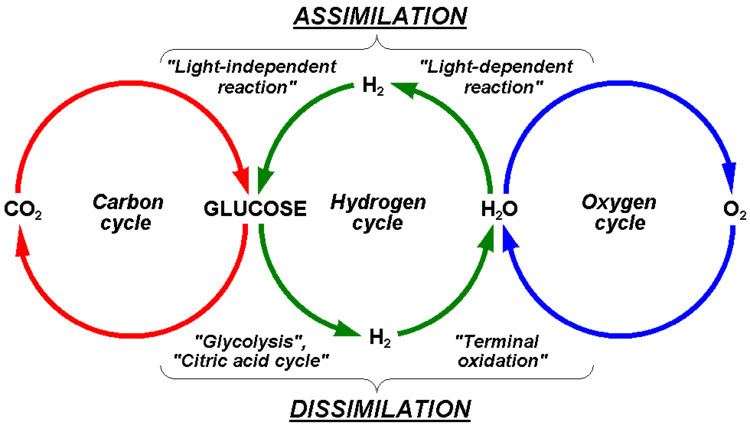 | ||
Anaerobic fermentation of organic substances to carbon dioxide and methane is a collaborative effort involving many different biochemical reactions, processes and species of microorganisms. One of these many processes that occur is termed "interspecies hydrogen transfer". This process has been described as integral to the symbiosis between certain methane-producing archaea (methanogens) and nonmethanogenic anaerobes. In this symbiosis, the nonmethanogenic anaerobes degrade the organic substance and produce, among other things, molecular hydrogen (H2). This hydrogen is then taken up by methanogens and converted to methane via methanogenesis. One important characteristic of interspecies hydrogen transfer is that the H2 concentration in the microbial environment is very low. Maintaining a low hydrogen concentration is important because the anaerobic fermentative process becomes increasingly thermodynamically unfavorable as the partial pressure of hydrogen increases. A key difference compared to other biogeochemical cycles is that because of its low molecular weight hydrogen can leave Earth's atmosphere. It has been suggested that this occurred on a grand scale in the past and that this is why today the Earth is mostly irreversibly oxidised.
Contents
Relevance for the Global Climate
H2 is a trace, secondary greenhouse gas that interferes with the removal of methane. H2 interacts with hydroxyl radicals (•OH), reducing them to H2O (water). •OH radicals that would typically oxidize methane in the following reaction are removed if they first interact with H2 in the atmosphere.
Main Components
Atmosphere
Both biological and abiological processes contribute significantly to the global H2 cycle. The largest sources of environmental H2 are the atmospheric photochemical process of hydrocarbon dissociation and microbial H2 production. Biological processes are the dominant sink for atmospheric H2 illustrating that overall the most important physiological role of H2 is as a biological fuel. Within microbial environments cellular processes which result in H2 production are nearly always linked with either inter or intracellular H2 uptake.
